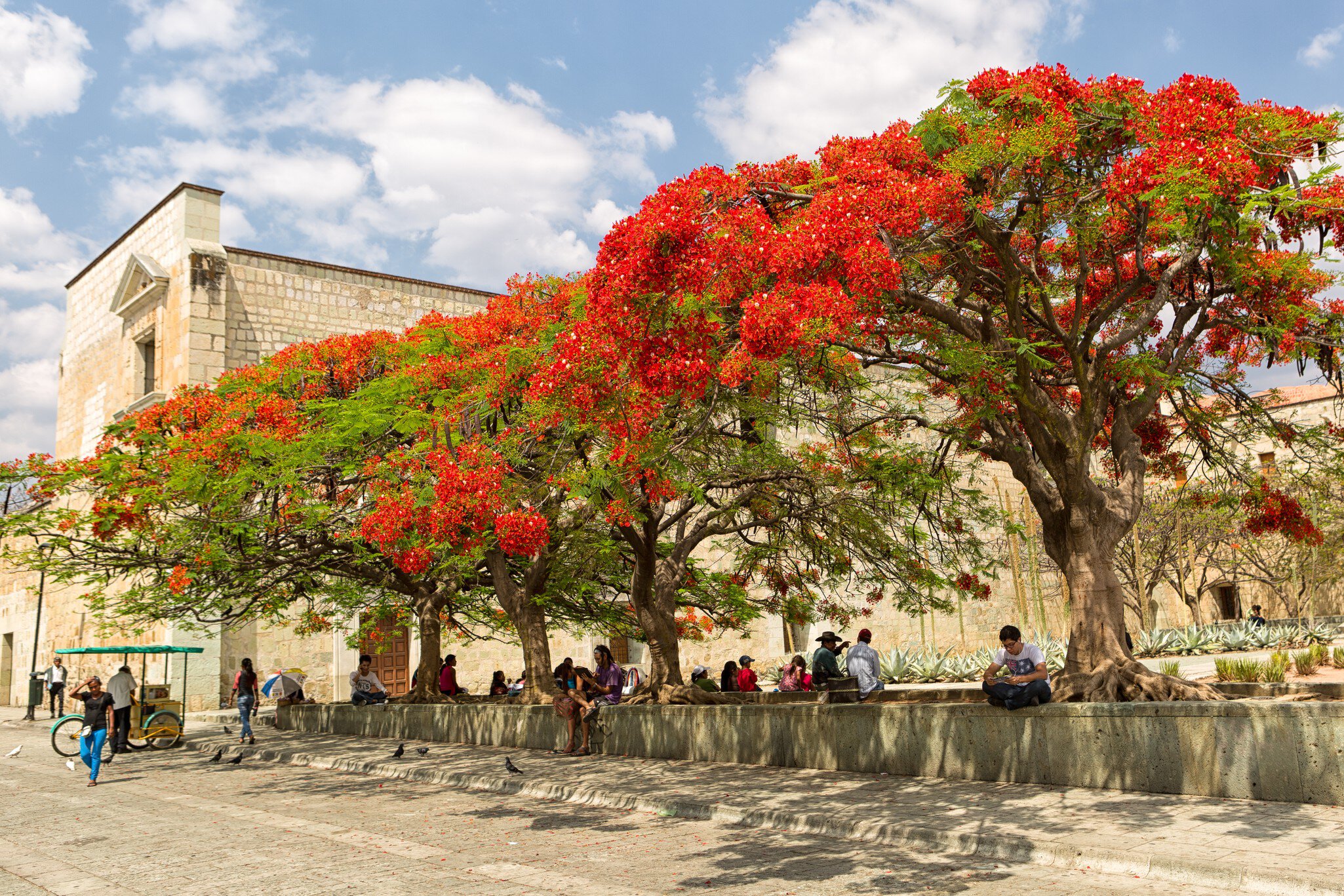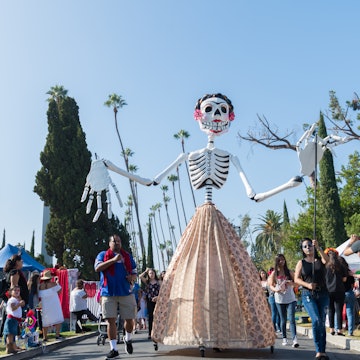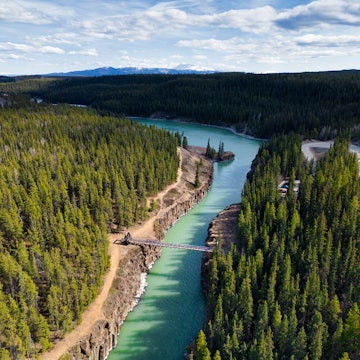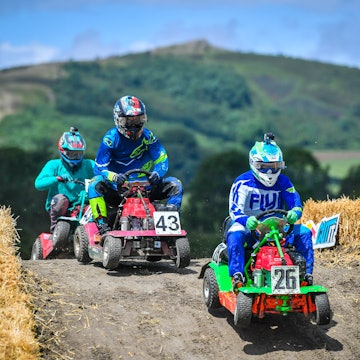

Sunrise in the Pueblos Mancomunados, Oaxaca. OverlandTheAmericas/Shutterstock
The state of Oaxaca – a highlight of a visit to Mexico – is packed with surprises. It’s one of the most biodiverse regions of the country, and also a place of incredible culinary, linguistic and cultural diversity deeply influenced by ancient Indigenous traditions.
In Oaxaca City, for instance, the recipe for that savory mole dish you’re eating just might be older than the (very old) city itself. And in the surrounding towns, artisans have been crafting intricate textiles and pottery since pre-Hispanic times.
Equally appealing are Oaxaca’s cloud-capped and forested highlands, its rugged cliff-backed beach coves and its coastal lagoons teeming with wildlife. In mezcal country, welcoming producers will show you how their families have been making Oaxaca’s signature alcoholic agave drink for centuries.
Start mapping out your itinerary with these tips on when to go and for how long, and what to do once you’ve touched down. Here’s our full guide to Oaxaca.

When should I go to Oaxaca?
The beginning of the calendar year is a pleasantly temperate time to visit Oaxaca, and an ideal month to spot migrating humpback whales off Puerto Escondido. The dry weather also makes it optimal for mountain adventures (bring a winter jacket). The weather remains mild and dry throughout the state, making for perfect beach days.
March means deep-sea fishing for sailfish and marlin; for birders, it’s the height of the bird-watching season in the Laguna de Manialtepec. On the third Monday of March, Oaxaca commemorates the birthday of its much-beloved son, President Benito Juárez.
In the summer, temperatures rise and rain is more frequent – but that hardly dampens the festivals around the state, from Guelaguetza, an iconic Indigenous cultural event, to , a mezcal celebration in Matatlán, both held every July. September is peak surf season and prime time for arribadas, when thousands of nesting sea turtles come ashore together at Playa Escobilla.
The rainy season ends ahead of Oaxaca’s famous DÃa de Muertos festivities on November 1 and 2, launching the state’s peak travel time. In Juchitán, Vela Muxe celebrates third-gendered Zapotec culture. As the holiday season approaches, temperatures dip and hotel rates spike; the capital holds the popular radish-carving Noche de Rábanos on December 23. Christmas celebrations involve religious processions, cultural events and large-scale nativity scenes all over the state.

How much time should I spend in Oaxaca State?
You can easily spend weeks exploring Oaxaca’s capital and its surrounding valleys – though be sure to make time for the state’s sublime beaches and coastal communities, or head to the mountains for outdoor adventures and Indigenous culture.
If you have only a day or two, base yourself in the cultural capital of Oaxaca City, where you can feast on tantalizing culinary delights, tap into the thriving art scene, hang out in mezcal joints and visit first-rate museums. If you have time, pay your respects to the widest tree in the world at El Tule.
With five days, you can set aside time to explore the extraordinary stonework at the ruins of Mitla. On the same day, enjoy a soak at Hierve El Agua, cliff-top mineral springs seemingly perched atop petrified waterfalls. For mezcal tasting, nearby Santiago Matatlán is a charming town surrounded by agave fields whose main street is lined with artisanal palenques (mezcal distilleries). Alternatively, head up to Oaxaca’s spectacular Sierra Norte mountains for hiking and biking through the forests of the Pueblos Mancomunados, a commonwealth of eight welcoming Zapotec villages.
If you have more than a week, make a beeline for Oaxaca’s spectacular Pacific coast. Surfers gravitate to Puerto Escondido – yet if you want a deeper outdoorsy experience, head to the protected BahÃas de Huatulco, where the rugged coastline reveals hidden beaches and waters rich with sea life. Alternative-lifestyle types – or folks who just love beach bumming – will enjoy the anything-goes vibe in Mazunte and Zipolite, while those who seek off-the-beaten-path spots will revel in the lagoon-fringed beach at Parque Nacional Lagunas de Chacahua.
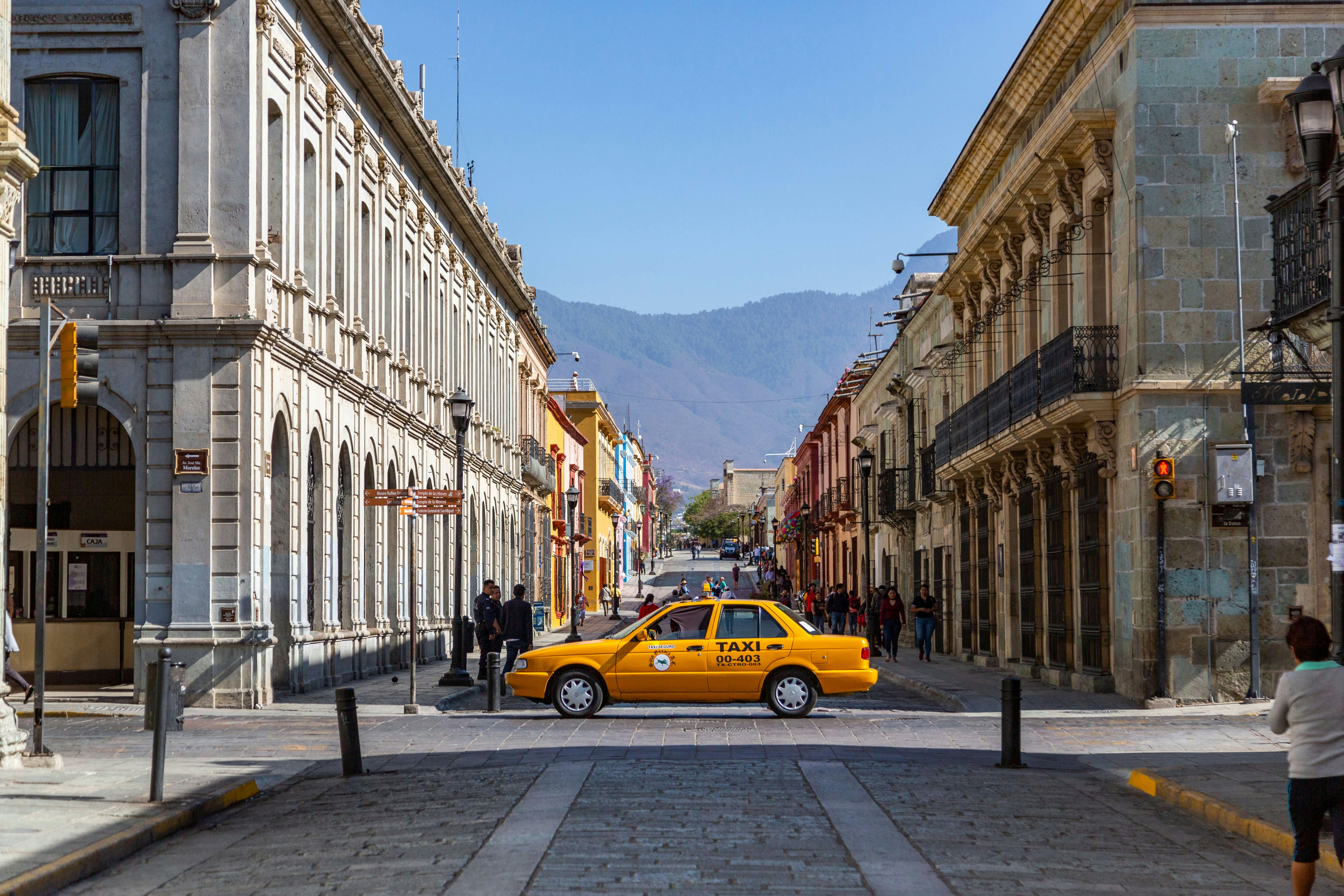
Is it easy to get around in Oaxaca State?
A car is the most convenient option for reaching Oaxaca’s remote mountain towns, out-of-the-way ruins, mezcal distilleries and small coastal villages with little or no public transportation. But do ditch your wheels if you plan on spending a significant amount of time in the congested capital.
If you’re serious about public transport, Oaxaca’s efficient, comfortable and affordable is generally the best way to get between major destinations. Older second-class buses serve many of the smaller towns, while passenger vans ply the winding mountain roads to the coast, stopping in villages along the way.
Colectivos (shared taxis) are often the cheapest and quickest way to get around within towns and outlying areas. Some of these vehicles in coastal and mountain towns are covered pickup trucks; in Oaxaca City and the Valles Centrales, they’re usually four-door sedans.
Top things to do in Oaxaca State

Get to know mezcal in Oaxaca City
Oaxaca’s capital overflows with restaurants, atmospheric ³¾±ð³ú³¦²¹±ô±ð°ùò¹²õ (small specialty bars) and tasting rooms serving mezcal, an agave-based spirit that’s enjoying an unprecedented boom as a growing number of aficionados see tequila as too mainstream. Even nondrinkers will find it fascinating to take a deep dive into the world of this distilled spirit, given the wide variety of agave species and production methods that figure into each bottle.
To familiarize yourself with the taste distinctions of mezcal and destilados de agave (an alternative term for similarly distilled agave drinks), book a tasting session at . Here, experts go into great detail about where each variety is produced, the production process behind each bottle, and how to identify the distinctive flavor profiles of maguey (a type of agave) plants, some of which take 25 years to mature. and are other good spots to get schooled on all matters mezcal.
If you’re just looking for some casual socializing over drinks, options abound. For top-shelf mezcal and craft cocktails, super-chic and stock some of Oaxaca’s best brands, while prepares mixed mezcal concoctions using exclusively local ingredients such as Mexican pepperleaf, cocoa and salt with ground maguey worms.

Release baby turtles on the beach at Puerto Escondido
On the western edge of the heavenly beach town of Puerto Escondido, Playa Bacocho is a ribbon of golden sand popular with beachgoers. Starting at sunset, though, it draws a different kind of crowd: baby turtles, for this is the local go-to spot for baby-turtle releases, mostly olive ridley and green sea turtles.
Run year-round by , a local NGO with an on-site turtle hatchery, the tours start with short educational talks (offered in English and Spanish) before you’re handed a tiny hatchling in a jicara (dried fruit gourd). Joining fellow participants along the shoreline, you’ll then release the squirming creatures onto the wet sand, watching them scurry to the sea for the first time. It’s hard to resist cheering the little creatures on.

See Zapotec ruins with a view at Monte Albán
Monte Albán is graced with astonishing vistas of Oaxaca’s valleys and distant mountains – so it’s no wonder the ancient Zapotecs chose to build their capital atop this privileged hillside location some 2500 years ago, and occupied it for 1450 years thereafter. While it remains a mystery as to why the city was abandoned around 950 CE, the expansive site and the structures that remain make it easy to picture a settlement of magnificent temples, tall-stepped platforms, majestic palaces and terraced dwellings that were once home to an estimated 35,000 people.
Be sure to climb both the Plataforma Norte (North Platform), which affords the best vistas over the entire Monte Albán site, and the Plataforma Sur (South Platform), the site’s tallest structure, whose 40m-high staircase leads to spectacular panoramas beyond. Another highlight is the Edificio de los Danzantes, its exterior lined with replicas of famous carvings known as Danzantes (Dancers). Created between 500 and 100 BCE, they are thought to be depictions of sacrificed leaders of conquered neighboring towns. The figures have open mouths (sometimes downturned in Olmec style) and closed eyes; some show blood flowing where they have been disemboweled.

Party in the buff in Zipolite
The oceanfront town of Zipolite draws a distinct type of beach bum, one who’s as interested in aligning their chakras and growing out their dreadlocks as they are taking to the waves. Zipolite’s nonconformist vibe is most, um, visible during its annual , a celebration of the human form and body positivity. Taking place in late January and early February, the 3-day event brings naturists from all over the world to participate in beach yoga sessions, body-painting workshops, volleyball and soccer tournaments, live-music performances, communal dinners and parties, all of them clothes-free. Participants can also join workshops focusing on naturism, body positivity and mental wellness, all led by experts and advocates. True to Zipolite’s countercultural vibe, most festival events are free to attend.​

Hike through cloud forests near the Pueblos Mancomunados
More than 100km of trails surround and link the eight villages that form the Pueblos Mancomunados, high in the magnificent Sierra Norte. Hikes vary in length and difficulty, making it easy to spend anywhere from a morning to several days exploring the high-altitude pine and oak forests, which are home to some 400 bird species and nearly 4000 plant varieties.
If you’re short on time, the 8km walk between Cuajimoloyas and Benito Juárez on the Needa-Naa-Lagashxi trail is one of the most scenic and accessible routes. The high-altitude hike – it hovers around 3100m – winds through forest, crossing streams and passing gigantic agave plants and waterfalls that appear during the rainy season. Occasional openings in the forest reveal the terraced fields of traditional Zapotec farms.
Near Benito Juárez, the trail crosses a bouncy suspension bridge, which leads to El Mirador, a craning lookout tower perched high above the village. If you have the energy (and it’s a clear day), scramble up the nearby Piedra Larga rock formation for views of Pico de Orizaba, Mexico’s highest mountain.
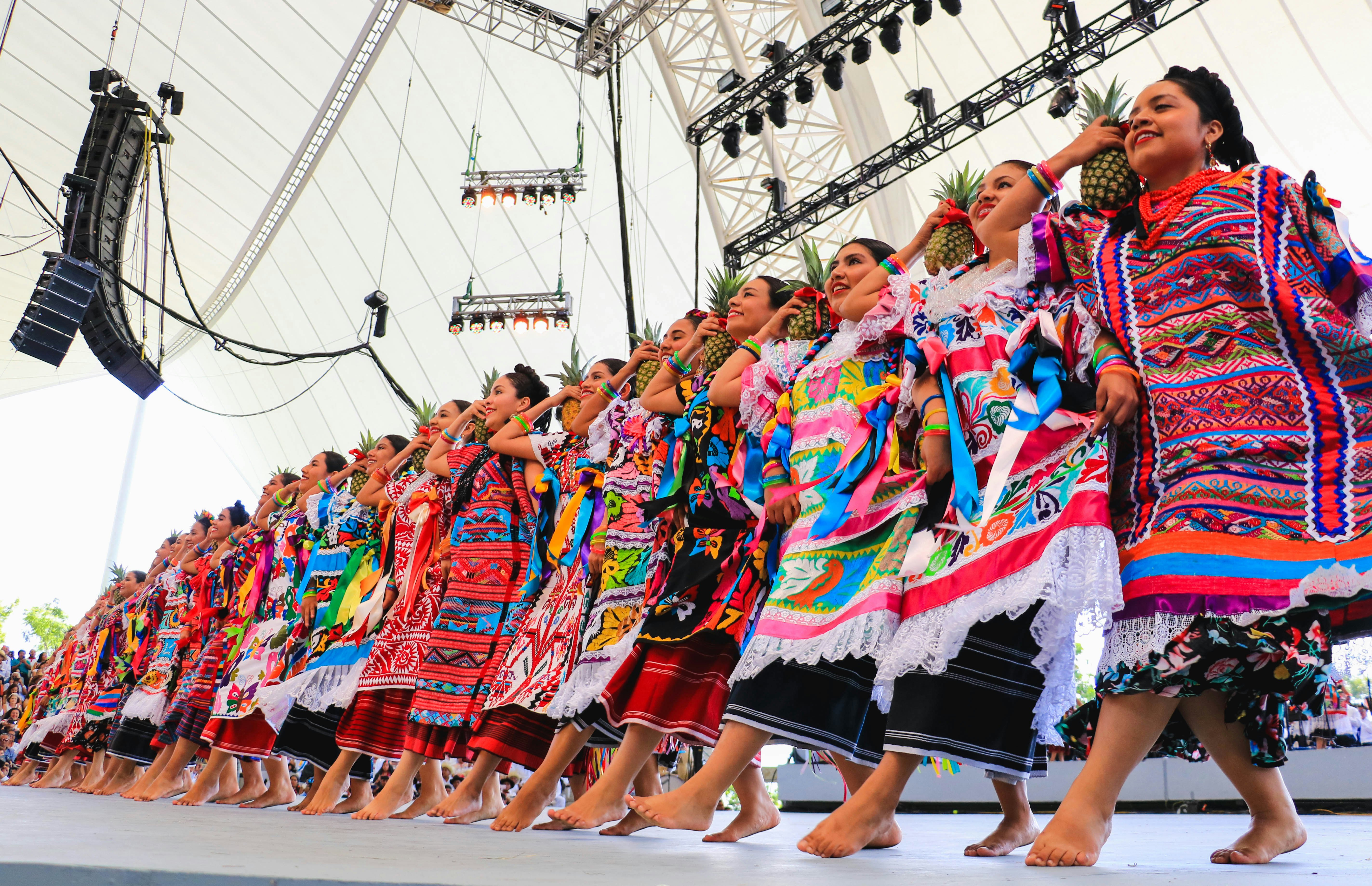
How much money do I need for Oaxaca?
Mezcal tasting at Mezcaloteca: from M$550
One-way bus ticket from Oaxaca City to Puerto Escondido: from M$355
Donation to participate in sea-turtle release at Playa Bacocho: from M$200
Admission to Monte Albán: M$100
Participation in beach yoga in Zipolite: free
This article was adapted from ÌÇÐÄ´«Ã½â€™s guidebook, published in October 2025.

Plan with a local

